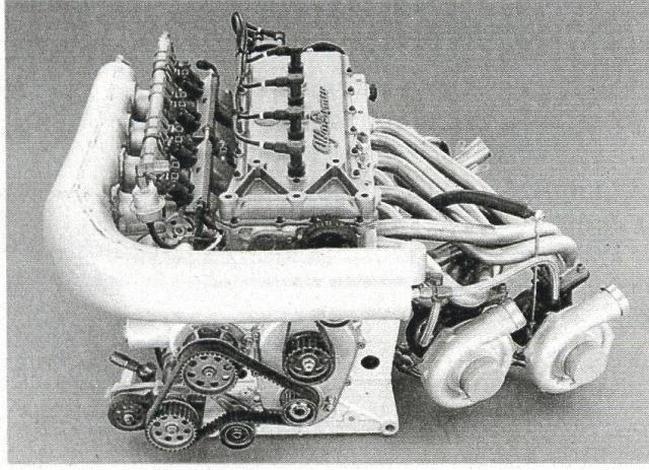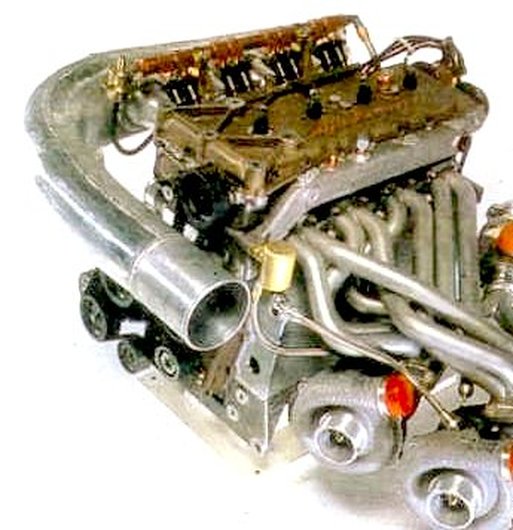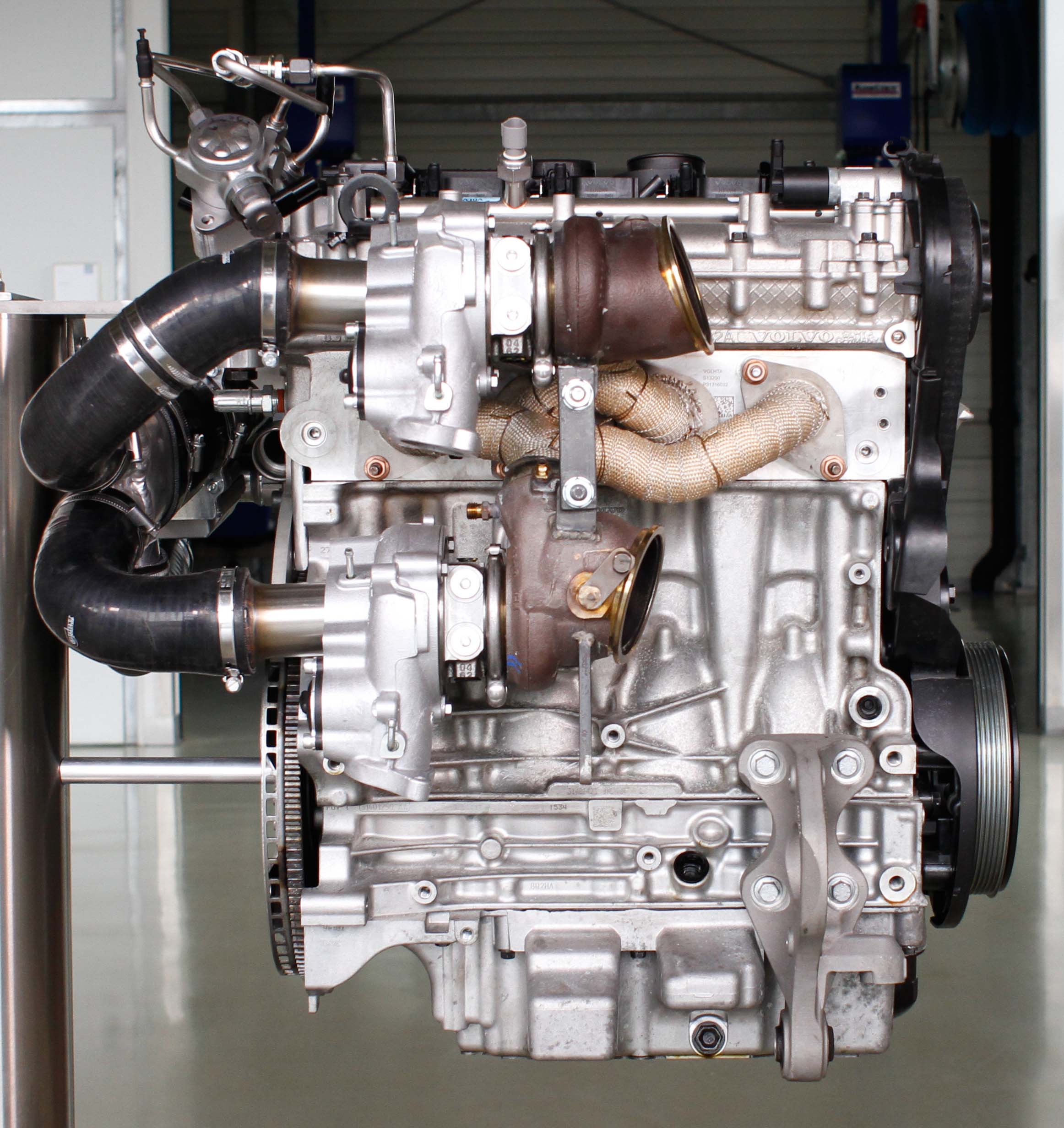- Login or Register
No account yet? Sign up
No because they want more work performed on the turbo to balance out fluctuations in rpm and reduce pumping losses.vorticism wrote: ↑04 Jul 2023, 01:36True. Ignoring development cost, if they were given the option, TT would give some packaging advantages (mass center height, runner length, cooling). Good enough to warrant their use, I won't say. In the 80s all the V6s were TT; granted they didn't have a fuel flow limit but would still have been interested in efficiency. The four cylinders of the same era (i.e. similar flow rates) were single turbo, which suggests lag alone wouldn't have ruled out single turbo on a six cylinder. Would an I4 not have benefitted from TT in the same way a V6 of similar output would?
You would lose that with smaller TT’s. They are making up for shaft rpm limits with a larger diameter (tip speed would be faster in terms of velocity).As mentioned above, the pressure ratio and flow rate required for turbochargers increased dramatically during the development process. In order to satisfy these demands with high operating point efficiency, including high altitude circuits, it is necessary to increase the rotation speed of the compressor and turbine, or increase the impeller peripheral speed by increasing the diameter of the impeller. , Since the maximum rotation speed is regulated by regulation, the only option this time was to increase the diameter. In order to install the large-diameter compressor in the engine, it was necessary to place it in front of the engine block and connect it to the turbine with a long shaft via MGU-H
Can't most of the heat loss be negated by modern ceramic coatings and heat shielding?
Um, elaborate? Because this doesn’t make any sense. If you can keep spacing evenly apart, the more cylinders, the better.Tommy Cookers wrote: ↑04 Jul 2023, 11:27peripheral gas leakage is larger (relatively) in smaller turbines and compressors
for exhaust waveform the best number of cylinders per turbo is 3 (ie not 1 2 4 5 6 etc)
My reading agreed with the 3cyl->1 turbo, as the pulses are 120 degrees apart. An inline 6 could also port the twinned cylinders into a manifold for the same outcome.Hoffman900 wrote: ↑04 Jul 2023, 15:37Um, elaborate? Because this doesn’t make any sense.Tommy Cookers wrote: ↑04 Jul 2023, 11:27peripheral gas leakage is larger (relatively) in smaller turbines and compressors
for exhaust waveform the best number of cylinders per turbo is 3 (ie not 1 2 4 5 6 etc)
The heat loss shouldn’t be too great these days. The F1 engines are only 1.6L (rules mandated 101.2mm +/- mm bore spacing) so their overall length is very short, so the front banks to the rear of the engine (to the hot side of the turbo) is short. No one is using ceramic coating on the exhausts, they’re inconel and are ceramic heat shield cladded to protect the everything else nearby (body work and whatever else is packaged nearby).
Not as readily available in the 80s. Yes, wraps and coatings did exist by that point already, but they have fairly sophisticated layered foil wraps these days, fully shaped and fitted, not just panels; I don't recalls seeing those often until the 00s. Probably not prime importance wrt which areas you'd optimize for efficiency, in those days. And with the high a:f ratios of today's engines, I do wonder how problematic heat transferal actually is.
More generally, I'd say it depends on pulse size and frequency relative to turbine features. An I4 delivers every 180* vs 240* for one V6 bank, although both the exhaust volume and turbine are smaller (for equal output equal displacement engines) on the V6 which ultimately determines responsiveness. Which is to say, the 80s TT V6s may not have been about reducing lag, rather more about packaging and prioritization of cylinder count and arrangement.Tommy Cookers wrote: ↑04 Jul 2023, 11:27peripheral gas leakage is larger (relatively) in smaller turbines and compressors
for exhaust waveform the best number of cylinders per turbo is 3 (ie not 1 2 4 5 6 etc)



TC is correct although I would modify his statement to sayHoffman900 wrote: ↑04 Jul 2023, 15:37Um, elaborate? Because this doesn’t make any sense. If you can keep spacing evenly apart, the more cylinders, the better.Tommy Cookers wrote: ↑04 Jul 2023, 11:27peripheral gas leakage is larger (relatively) in smaller turbines and compressors
for exhaust waveform the best number of cylinders per turbo is 3 (ie not 1 2 4 5 6 etc)
The reasoning goes like this:for exhaust waveform the best number of cylinders per turbine nozzle is 3 (ie not 1 2 4 5 6 etc).

Koreans? Tohoku University and all of the named researchers are Japanese.PlatinumZealot wrote: ↑18 Mar 2024, 01:16latest research uncovers even more pote
Tial for combustion engines:
https://phys.org/news/2024-03-theory-li ... admap.html
Basically the koreans have identified that there is more than one steady state solution for ignition in subsonic and supersonic regimes and that these consider the ignition wave. So if my intereptation is correct engine researches will now start finetuning experiments around these solutions by manipulating the ignition waves. Could expect obviously more efficient combustion.

The fact that Tohoku University is in Japan has nothing to do with my "false memory" as I typed my post.ispano6 wrote: ↑21 Mar 2024, 07:52Koreans? Tohoku University and all of the named researchers are Japanese.PlatinumZealot wrote: ↑18 Mar 2024, 01:16latest research uncovers even more pote
Tial for combustion engines:
https://phys.org/news/2024-03-theory-li ... admap.html
Basically the koreans have identified that there is more than one steady state solution for ignition in subsonic and supersonic regimes and that these consider the ignition wave. So if my intereptation is correct engine researches will now start finetuning experiments around these solutions by manipulating the ignition waves. Could expect obviously more efficient combustion.